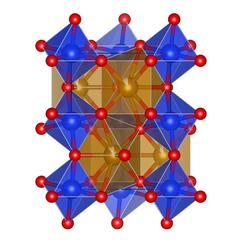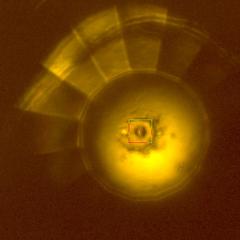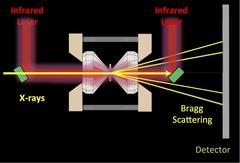URL: https://www.desy.de/news/news_search/index_eng.html
Breadcrumb Navigation
[LgDashBoard2@/e409/e116959/e119238][getObjProperty]: key=title[py] Traceback (most recent call last): File "/home/zeoclients/parts/products/zms/_objattrs.py", line 679, in getObjProperty value = metaObjAttr['py'](zmscontext=self) File "/home/zeoclients/parts/zope2/lib/python/Shared/DC/Scripts/Bindings.py", line 313, in __call__ return self._bindAndExec(args, kw, None) File "/home/zeoclients/parts/zope2/lib/python/Shared/DC/Scripts/Bindings.py", line 350, in _bindAndExec return self._exec(bound_data, args, kw) File "/home/zeoclients/parts/zope2/lib/python/Products/PythonScripts/PythonScript.py", line 328, in _exec result = f(*args, **kw) File "Script (Python)", line 6, in LgDashBoard2.title UnicodeDecodeError: 'ascii' codec can't decode byte 0xe2 in position 28: ordinal not in range(128)
News
News from the DESY research centre
New insights about our Earth’s lower mantle
Using DESY's bright X-ray light source PETRA III, a team of scientists has discovered unexpected facts about the most abundant mineral on Earth. The mineral bridgmanite makes up roughly one third of Earth’s entire volume and is the major component of Earth’s lower mantle. Thus, its physical properties are one of the deciding factors for understanding the dynamics of our planet, with a direct impact on life on Earth’s surface, ranging from deep-focus earthquakes to geochemical cycles leading to formation of mineral deposits. Bridgmanite is rather hard to study under its ‘normal conditions’ that are very high pressures and temperatures. Therefore many properties were discussed controversially within the scientific community.

“Our Earth is a dynamic planet and we can feel that every day, for example during earthquakes,” explains Hanns-Peter Liermann, head of the Extreme Conditions Beamline P02.2 at PETRA III, where the experiments took place. “Earthquakes can originate from different points within our planet, and in order to understand how they are generated and propagate, we need to understand the dynamics of our planet that are closely related to the minerals present in the interior.” The lower mantle takes up more than half of Earth’s interior, and up to 80 per cent of the lower mantle consist of bridgmanite.

The experimental set up that was used for this study was a laser-heated diamond anvil cell (DAC). The bridgmanite crystal is loaded into a small chamber and compressed by specially cut diamonds to reach high pressures. Additionally, laser beams are focused on the crystal to heat it up to 3100 Kelvin (2827 degrees Celsius). In this way the bridgmanite crystal is under high pressure and extreme heat while the X-ray beam is focused onto it. The bridgmanite crystal scatters the X-rays and from the resulting diffraction pattern its crystal lattice structure can be calculated.

Up to 80 per cent of Earth's lower mantle is made up of bridgmanite. Credit: DESY

Schematic illustration of the experiment set-up. Credit: Hanns-Peter Liermann/DESY
Reference:
Stability of Fe,Al-bearing bridgmanite in the lower mantle and synthesis of pure Fe-bridgmanite; Leyla Ismailova, Elena Bykova, Maxim Bykov, Valerio Cerantola, Catherine McCammon, Tiziana Boffa Ballaran, Andrei Bobrov, Ryosuke Sinmyo, Natalia Dubrovinskaia, Konstantin Glazyrin, Hanns-Peter Liermann, Ilya Kupenko, Michael Hanfland, Clemens Prescher, Vitali Prakapenka, Volodymyr Svitlyk, Leonid Dubrovinsky; Science Advances, 2016; DOI: 10.1126/sciadv.1600427



